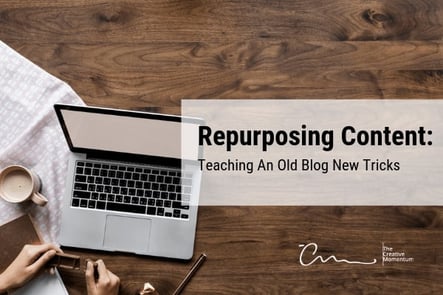
Company blogs have been popular for well over a decade, and if you’ve been up and running for any sizeable span of that time, you have a lot of blog entries. Some of these pieces may be worth sprucing up and hanging onto; others, not so much. Repurposing old entries can be a great way to capitalize on your existing content, but first, you need to sort the regular content from the evergreen content.
If you’re passionate about what you do, you can always find the time to talk about it or, in this case, write about it. But even the most driven professional will concede that there are ultimately a finite number of issues to address in their industry. Because of this, you may find yourself circling back to things that you have already discussed, repeatedly addressing similar points. This is where the magic of repurposing content comes into play.
Step One: Assessment
The old approach to blogging and SEO was “more is better”– more content, more keywords, more clicks.
However, updates to search algorithms have come a long way, and criteria like accuracy and relevancy are now major considerations, to the point where a bulky repository of blogs with bad practices could hurt your rankings rather than help them.
What this means for your burgeoning trove of digital wisdom is that it requires a quality assessment. Depending upon your CMS and the efforts you put into categorizing your initial posts, this could be quick or it could be a chore. The first step is to take an inventory of all your existing content and get ready to ask the hard question.
Why Are You Telling Me This?
Visualize the most lucrative and important contract of your entire career awaiting a signature from your counterpart. Now imagine them eyeing your blog entry and asking you the above question, stone-faced and severe.
Well?
If, in this hellish dream of a dilemma, you stumble, stutter, or scratch your head, the blog’s got to go.
If it’s on your website, it needs to create value. Does this inform your market segment of an issue pertinent to their concerns? Does it connect with your audience? Is it entertaining? Does it help establish your brand voice as an authority in your industry? If you can answer yes, then it’s a keeper.
The reason why it’s worth taking the time to prune blogs that fail this test is about more than brand management. Aforementioned criteria like relevancy and accuracy measure whether or not users actually found what they were looking for on your webpage, and these affect your organic ranking accordingly. This means that a bad blog with good keywords can do actual harm to your ranking.
Problem Posts
Worse than ineffective blogs, there are entries that can be outright problematic. There are a number of different reasons that a piece of old content could cause a massive headache. It could be a mistake founded in optimism, like touting an upcoming development as the future of the industry and foundation of your business model—before it promptly flopped.
It could have been a less-than-motivated intern giving it the good old high school try by copying someone else’s work word-for-word, leaving you open to a case of plagiarism.
Perhaps in an effort to connect with the times, a writer expressed a sentiment in an overt or subtle way that is no longer deemed appropriate and no longer favoring your brand image.
There are a number of different ways that your old posts can open you up to a variety of liabilities that you may not be considering while they sit tucked away in the corners of your archive.
The Keepers
By now your palms should be sweating with anxiety as you ponder the ticking time bomb sitting at the top right of your navigation bar because there is a pay-off here.
Once you’ve pruned the weeds and disarmed the catastrophes, you’ll be left with your proverbial crown jewels.
Somewhere, stowed away among wilting blog entries, are hints of inspiration, enthusiasm, and genuine insight that stand the test of time. You might just find some fun blogs that are worth revisiting or ideas that you’ve developed since but not yet voiced. With inventory and assessment out of the way, this is your chance to update, improve, and promote your old content with a new sheen.
The end results of the process should be a safe, organized, and optimized company blog with content to be repurposed at your leisure or tightest deadline.
The industry insights that have remained consistent throughout your career, or developed with experience, are perhaps the most valuable assets you have on your blog. For that reason, it’s worth taking the time to keep stock of your digital trail.

